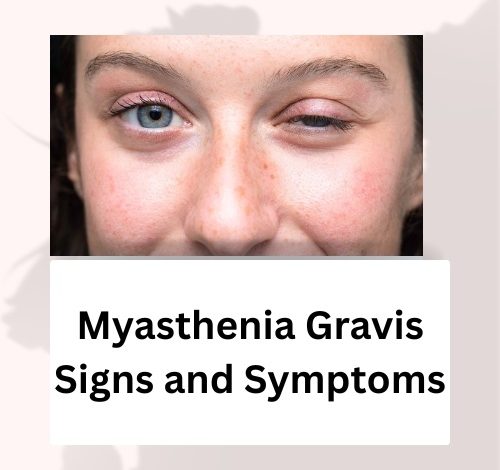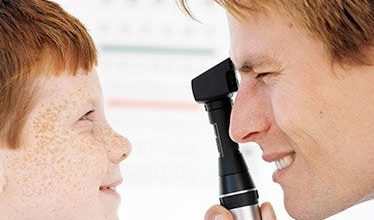Myasthenia Gravis Signs and Symptoms: What You Need to Recognise Early

Myasthenia gravis is a chronic autoimmune disorder that affects the way muscles respond to nerve signals. It causes varying degrees of muscle weakness, which often worsens with activity and improves with rest. Early recognition of myasthenia gravis signs and symptoms is crucial to receiving appropriate care and managing the condition effectively.
Many people mistake the early signs for general fatigue or age-related changes, leading to delays in diagnosis. This article outlines everything you need to know about the signs and symptoms of myasthenia gravis, how they affect daily life, and what to expect during different stages.
What Causes Myasthenia Gravis?
Myasthenia gravis occurs when the body’s immune system produces antibodies that block or destroy receptors at the neuromuscular junction—the point where nerves signal muscles to contract. This interference disrupts communication between nerves and muscles, resulting in weakness.
Although the precise trigger remains unclear, researchers link the condition to a combination of genetic and environmental factors. The thymus gland often plays a role, especially in younger patients, and abnormalities such as thymomas (tumours) are commonly associated with the disorder.
Who Is Affected?
While myasthenia gravis signs symptoms can appear at any age, the condition tends to affect women under 40 and men over 60 more commonly. However, children and adolescents can also develop juvenile forms of the disease. No matter the age, the symptoms can significantly affect mobility, vision, and overall quality of life.
Key Myasthenia Gravis Signs and Symptoms
1. Muscle Weakness That Worsens With Activity
The hallmark symptom is weakness that improves with rest but worsens after physical exertion. This fatigue-like symptom often starts subtly and can fluctuate throughout the day.
- You might feel your arms tire quickly while brushing your hair.
- Climbing stairs or lifting objects could feel more difficult than usual.
- Activities like chewing or swallowing may become tiring after just a few minutes.
This feature distinguishes myasthenia gravis from many other neurological conditions.
2. Drooping Eyelids (Ptosis)
Ptosis is often the first noticeable sign. One or both eyelids may begin to sag, especially toward the end of the day or after extended visual activity.
You might notice:
- Your eyes appearing uneven in photographs.
- Needing to tilt your head back to see clearly.
- Blurry or obstructed vision due to a sagging lid.
This symptom typically fluctuates and is more prominent when you’re tired.
3. Double Vision (Diplopia)
Alongside drooping eyelids, double vision is a key feature of myasthenia gravis symptoms and signs. Weakness in the eye muscles leads to misalignment, causing two overlapping or separate images.
- Covering one eye often resolves the issue.
- It can be worse in bright light or after reading for long periods.
- Some people adapt by squinting or tilting their head to compensate.
Less Common but Notable Symptoms
4. Facial Muscle Weakness
This can affect smiling, frowning, and expressions. Your face may appear “mask-like” or lack animation, which can affect social interaction.
You might also struggle with:
- Whistling or blowing.
- Drinking from a straw.
- Speaking clearly, particularly towards the end of a conversation.
5. Speech Difficulties (Dysarthria)
Voice weakness or slurring—especially after extended talking—can occur. The voice may sound nasal, hoarse, or weak.
- Speaking at length might become effortful.
- Friends or family might notice changes before you do.
- Communication can become challenging in noisy environments.
6. Difficulty Swallowing (Dysphagia)
This occurs when throat muscles become weak, causing problems with swallowing, particularly solid foods.
Symptoms include:
- Coughing or choking during meals.
- A feeling of food sticking in the throat.
- Avoiding certain foods due to fear of choking.
Swallowing problems should be addressed urgently, as they can increase the risk of aspiration and weight loss.
7. Neck and Limb Weakness
In some cases, weakness extends to the neck and limbs. This can affect posture, head control, and the ability to walk.
- Holding your head upright might feel difficult after a while.
- Arms may fatigue quickly when extended.
- Tasks requiring arm strength—like driving or carrying shopping—may become harder.
Myasthenic Crisis: A Medical Emergency
A severe exacerbation of symptoms can lead to respiratory muscle weakness, causing difficulty breathing. This is called a myasthenic crisis and requires emergency care.
Signs to look out for:
- Shortness of breath even at rest.
- Shallow or laboured breathing.
- Inability to speak more than a few words at a time.
If breathing becomes difficult, seek medical help immediately.
How Symptoms Progress Over Time
The course of myasthenia gravis varies. For some, symptoms remain mild and manageable for years. For others, they progress quickly within the first 12–18 months of onset. Flare-ups can occur spontaneously or be triggered by infections, stress, medications, or hormonal changes.
Early recognition of signs and symptoms of myasthenia gravis helps slow progression and reduces the impact on daily living. Prompt treatment can improve strength, reduce fatigue, and prevent complications.
How Is Myasthenia Gravis Diagnosed?
Diagnosis often begins with a physical examination and review of your symptoms. Several tests can confirm the diagnosis:
- Antibody blood tests to detect autoantibodies (e.g., anti-AChR or anti-MuSK).
- Electromyography (EMG) to assess muscle response.
- Tensilon test, though less commonly used now.
- Imaging scans (CT or MRI) to detect thymus abnormalities.
A neurologist typically coordinates the diagnosis and long-term care plan.
Managing Symptoms Day-to-Day
Although there’s no known cure, many people manage the disease effectively with medication and lifestyle adjustments. Some also explore Natural Remedies for Myasthenia Gravis to help ease symptoms and support overall well-being. Recognising myasthenia gravis signs and symptoms early plays a central role in this.
Key Management Tips:
- Medication adherence: Most patients are prescribed anticholinesterase agents (e.g., pyridostigmine) or immunosuppressants.
- Rest: Fatigue worsens symptoms, so allow for adequate rest between activities.
- Avoid known triggers: These can include extreme heat, stress, and some antibiotics.
- Nutrition and hydration: Help maintain energy and avoid muscle fatigue.
- Speech and physical therapy: Tailored support helps maintain strength and function.
Living Well with Myasthenia Gravis
With appropriate Natural Treatment for Myasthenia Gravis and monitoring, most individuals can lead active lives. Understanding the signs and symptoms myasthenia gravis presents helps you advocate for yourself and take control of your health.
Support groups, occupational therapy, and open communication with your healthcare team make a real difference. Educating family and friends also helps create a supportive environment, especially during flare-ups.
Conclusion
Recognising the early myasthenia gravis signs and symptoms could change the course of the condition. From drooping eyelids to swallowing problems, each symptom tells a part of the story. The more aware you are, the more empowered you become in managing your health.
If you’re noticing any of the myasthenia gravis symptoms and signs described above, speak to a medical professional. Early diagnosis leads to better outcomes and helps maintain quality of life.
For more detailed insights on this condition, explore our related article on myasthenia gravis signs symptoms for in-depth information and practical advice.
Related Articles:
Myasthenia Gravis Symptoms: What to Watch for and How to Respond
Best Food for Myasthenia Gravis: Eat Well to Support Your Strength
The Evolving Landscape of Autoimmune Disease Research
Home Remedies for Myasthenia Gravis Find the Comfort You Need
Natural and Herbal Treatment for Myasthenia Gravis
5 Useful Natural Remedies for Myasthenia Gravis to Lessen the Symptoms




